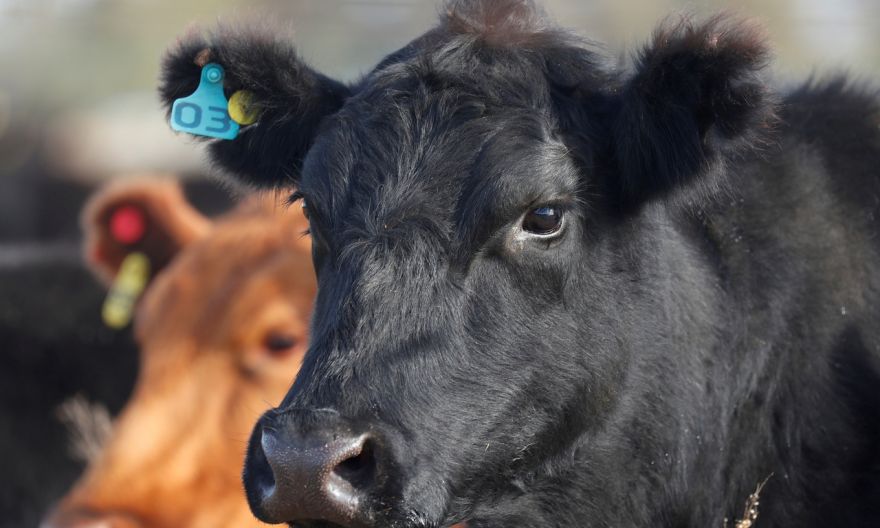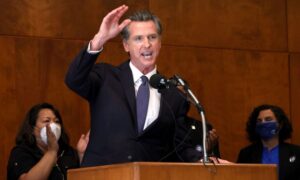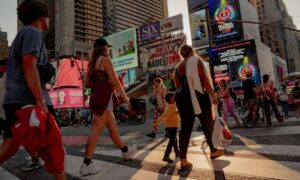Ireland takes on powerful farm lobby to meet climate goals

BELFAST (BLOOMBERG) – The cattle that roam Ireland’s fields are a charming part of its stunning landscapes. They’re also the reason the country is Europe’s third-biggest emitter of greenhouse gases per person.
Finding a way to cut those emissions is the best chance Ireland has of meeting the European Union’s goal of reaching net zero by 2050.
The obvious way to do that is to reduce the number of cows the nation rears. The methane they spew into the atmosphere has more than 80 times the planet-warming impact of carbon dioxide in the first two decades.
Shrinking that herd though means the government will have to take on a powerful farm lobby that has the support of rural communities who are loathe to have anyone tell them how to use their land.
“It’s easy to throw ideas like herd reduction out there, it’s a much more nuanced argument than that,” says Mr Brian Rushe, deputy president of the Irish Farmers Association.
“Irish politicians talk about a national herd, but it’s not a national herd.”
Ireland’s farms are smaller and ownership is more dispersed than other developed countries with dominant agriculture sectors.
There are more than 130,000 farms with an average size of 32 hectares, according to government data, compared with 55 hectares in France and Germany.
The average Irish dairy herd has less than 100 cows, a quarter of those in New Zealand.
Those small family-run farms often aren’t very profitable and many owners have a second job in another industry to supplement their income.
But they continue to operate the farms because of their deep emotional ties to the land.
In many cases, it took generations for their families to gain control of the plots, including wresting the estates back from British landowners after Ireland gained independence from the United Kingdom.
On average, a piece of Irish land is only sold about once every 400 years.
The pushback from the farming industry has manifested in a multitude of ways, from downplaying the heat-trapping effect of methane to advocating for technological solutions as an alternative to shrinking cattle numbers.
The government has in turn tried to incentivise farmers to turn their land into carbon sinks by joining a tree-planting programme, rather than penalising them for their pollution – an approach that New Zealand is considering.
The government’s goal is to add 8,000 hectares of forest a year that will absorb 21 million tonnes of carbon dioxide by 2030.
That will make up about four-fifths of all the CO2 Ireland has to remove from the atmosphere to meet its target of cutting emissions 51 per cent by the end of the decade.
But even farmers who take up the government’s offer have struggled to secure the right paperwork to start planting trees.
The permit system has become snarled with a backlog of applications, according to Mr Dermot Houlihan, chairman of the Association of Irish Forestry Consultants.
Mr Houlihan says new plantings last year were the lowest since 1935, excluding World War II.
Only 2,000 hectares of forest was added last year, according to Coillte, the state-owned commercial forestry business.
The IFA estimates about 6,000 tree-planting licences are outstanding over issues such as requirements to plant specific trees.
“The afforestation programme has collapsed,” said Mr Houlihan. “Farmers have lost interest in planting trees because of difficulties in dealing with the Forest Service Schemes and the difficulties with getting approval to plant trees in the first place. Many no longer consider afforestation as an option on their farms.”
The government has been working to improve the permit process, but the long-term commitment is still a deterrent.
Farmers who sign up are required to replant trees if they cut them down and aren’t allowed to switch back to farming later on.
Tackling emissions from agriculture, which account for 15 per cent of global greenhouse gases, is a pressing issue without an easy solution.
Technologies to reduce methane emissions from cows are still experimental and not available cheaply on a large scale.
Mr Gerry Boyle, who heads Ireland’s Agriculture and Food Development Authority, also known as Teagasc, told lawmakers in April that “current scientific understanding indicates that reducing Irish agricultural greenhouse gas emissions through technical means is challenging”.
Animal farming is responsible for more than a third of Ireland’s emissions and European Commission President Ursula von der Leyen has said the nation can “lead the way” on solving the problem.
The government plans to publish a Climate Action Plan this fall that Prime Minister Micheal Martin has said will reflect greater ambition in cutting emissions after a landmark United Nations report underscored the urgency of cutting methane emissions.
The coalition government, which includes the Green Party as a junior partner, is under pressure to deliver more aggressive climate policies from urban voters who have also pushed the country to take progressive steps on issues such as gay marriage and abortion.
Their desire for more action on global warming, however, reflects a divide with rural residents who remain protective of the nation’s agriculture industry.
And the two ruling parties – Fianna Fail and Fine Gael – can’t afford to lose their support: about 58 per cent of their lawmakers come from constituencies outside Ireland’s biggest cities.
“Telling people what to do, pretending you know everything, doesn’t work,” says environment minister and Green Party leader Eamon Ryan.
“The farming community understands this. They understand that it’s their children’s future at stake here.”
Extreme weather is estimated to hurt crop productivity by as much as 30 per cent globally by mid-century, according to a study by Alexandre Köberle, a research fellow at the Grantham Institute at Imperial College London.
A report from Ireland’s Environmental Protection Agency and other researchers published this month indicated potential drought conditions have increased since 1992, especially in the east of the country.
“How can we develop rural Ireland at the same time that we take on this climate challenge?” Mr Ryan says. “I think that is doable. It requires a very significant change, it’s system change, but it is change for the better.”



